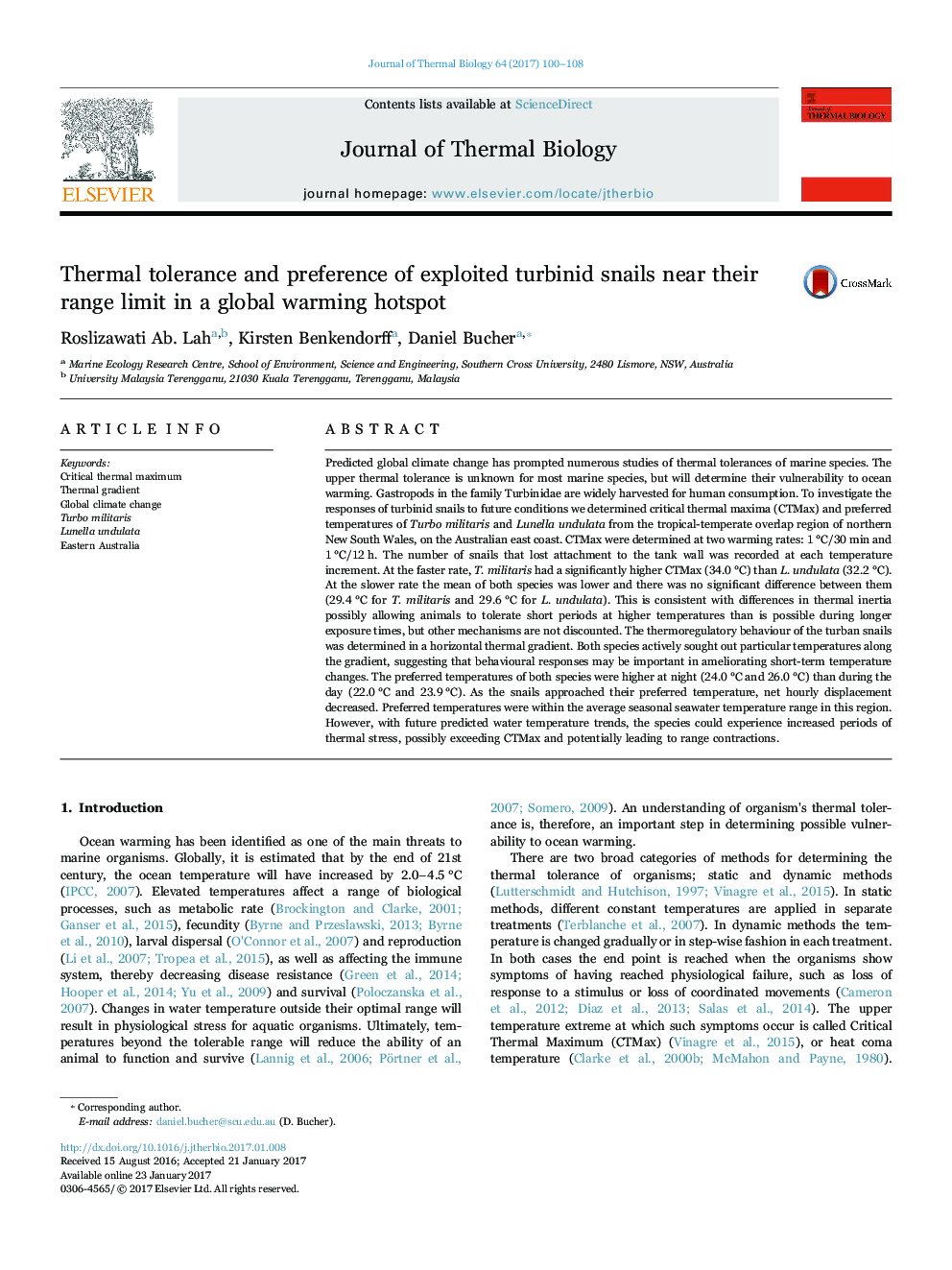| کد مقاله | کد نشریه | سال انتشار | مقاله انگلیسی | نسخه تمام متن |
|---|---|---|---|---|
| 5593442 | 1571083 | 2017 | 9 صفحه PDF | دانلود رایگان |
عنوان انگلیسی مقاله ISI
Thermal tolerance and preference of exploited turbinid snails near their range limit in a global warming hotspot
ترجمه فارسی عنوان
تحمل گرما و ترجیح از حلزون های توربینیدی مورد استفاده در نزدیکی محدوده وسیعی از آنها در یک نقطه گرمایش جهانی
دانلود مقاله + سفارش ترجمه
دانلود مقاله ISI انگلیسی
رایگان برای ایرانیان
کلمات کلیدی
موضوعات مرتبط
علوم زیستی و بیوفناوری
علوم کشاورزی و بیولوژیک
علوم کشاورزی و بیولوژیک (عمومی)
چکیده انگلیسی
Predicted global climate change has prompted numerous studies of thermal tolerances of marine species. The upper thermal tolerance is unknown for most marine species, but will determine their vulnerability to ocean warming. Gastropods in the family Turbinidae are widely harvested for human consumption. To investigate the responses of turbinid snails to future conditions we determined critical thermal maxima (CTMax) and preferred temperatures of Turbo militaris and Lunella undulata from the tropical-temperate overlap region of northern New South Wales, on the Australian east coast. CTMax were determined at two warming rates: 1 °C/30 min and 1 °C/12 h. The number of snails that lost attachment to the tank wall was recorded at each temperature increment. At the faster rate, T. militaris had a significantly higher CTMax (34.0 °C) than L. undulata (32.2 °C). At the slower rate the mean of both species was lower and there was no significant difference between them (29.4 °C for T. militaris and 29.6 °C for L. undulata). This is consistent with differences in thermal inertia possibly allowing animals to tolerate short periods at higher temperatures than is possible during longer exposure times, but other mechanisms are not discounted. The thermoregulatory behaviour of the turban snails was determined in a horizontal thermal gradient. Both species actively sought out particular temperatures along the gradient, suggesting that behavioural responses may be important in ameliorating short-term temperature changes. The preferred temperatures of both species were higher at night (24.0 °C and 26.0 °C) than during the day (22.0 °C and 23.9 °C). As the snails approached their preferred temperature, net hourly displacement decreased. Preferred temperatures were within the average seasonal seawater temperature range in this region. However, with future predicted water temperature trends, the species could experience increased periods of thermal stress, possibly exceeding CTMax and potentially leading to range contractions.
ناشر
Database: Elsevier - ScienceDirect (ساینس دایرکت)
Journal: Journal of Thermal Biology - Volume 64, February 2017, Pages 100-108
Journal: Journal of Thermal Biology - Volume 64, February 2017, Pages 100-108
نویسندگان
Roslizawati Ab. Lah, Kirsten Benkendorff, Daniel Bucher,
